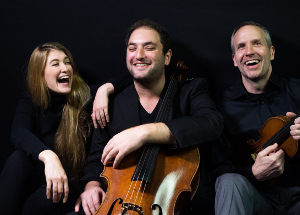The Triangle area might be the only place in the U.S. where concert promoters need to factor in the basketball schedules of our local teams as variables in setting up concert dates and times.
On January 22 at Hill Hall on the UNC campus, the Carolina Union Performing Arts Series presented Katia and Marielle Labèque, probably the most well known and well-regarded piano duo in the world. However, at the same time, the UNC men’s basketball team was on TV. The half-filled/empty auditorium (equal time for optimists and pessimists) was the result. This is a real shame, since we were one of the few cities that were part of their limited West Side Story tour.
The French-born Labèque sisters have dazzled the world not only with their exceptional playing but also their eclectic programs. This concert was one that combined the very new with some of the most loved music of the American musical theater. The program began with a curious performance of Three Preludes by George Gershwin “orchestrated for two pianos by Irwin Kostal.” These works, especially the slow, blues-influenced second one, are favorites of arrangers and transcribers. A masterful arrangement by William Henry Curry, Associate Conductor of the North Carolina Symphony, was given last fall. Expanding these lovely miniatures from one to two pianos seemed only to make you ask “Why?” The extra filigrees and doubling made you appreciate the solo version more. Twice as many pianos certainly did not make the Preludes twice as good.
The stage was filled with a wide variety of percussion instruments and speakers in preparation for the second work, Exile , for two pianos, percussion and live electronics, commissioned by the Labèques. The composer, Dave Maric, played the electronic keyboard while Colin Currie gave an incredible display of skill and dexterity on a wide variety of instruments including marimba, vibraphone, and many others. In fact, Maric’s performance was so mesmerizing it tended to distract me from the three keyboard players. The program notes say that the work is “based on intervals of the sixth” although the melodic nature of this piece was not the main impetus. The ambient sounds from the electronic keyboard gave this an other-worldly feel. This was one of those new works where you just wanted to bathe in the aura created by the sounds. Despite the agreeability and luxuriant quality, in the end it felt more like new-age wallpaper that you would meditate or do stretching exercises to.
Leonard Bernstein’s score to West Side Story is a gem that is one of the great artistic creations of Western civilization. This was the main reason I wanted to attend this concert, and I was not disappointed. Despite my disapproval of Kostal’s expansion of Gershwin’s piano preludes to two pianos, his orchestration of this score for two pianos and two percussionists was masterful. This is not surprising since he was one of four orchestrators who won an academy award for the 1961 film version. Joining the Labèque sisters onstage were percussionists Currie and Marque Gilmore, who mainly played drums.
The range of emotions, the rhythmic vitality and the sublime melodies were all present in a dynamic and heartfelt performance. The differences in the sisters’ demeanor and playing style was especially evident here. Marielle, seated on the traditional piano side, is an exuberant and extroverted performer. She wears her emotions for all to see and obviously had a great time. Katia is much more subdued and inward, although you wouldn’t guess that if you closed your eyes and just listened. There are several great sibling duos, including the phenomenal brother guitar duo of Sergio and Odair Assad who played at Duke several years back. Musicians who have grown up together really do play as if they were one soul, cliché or not. The Labèques played as if they were in each other’s heads, reacting to every nuance as one instrument. If you knew the West Side Story score from the movie soundtrack, this orchestration was very faithful to that, although there were some wonderful and unexpected moments. The percussionists added the spice and the body to this performance. Picking out any one song to describe would be a futile gesture, but as this was being played you were again reminded of the brilliance of this work. Everyone there knew every one of these tunes, but their ability still to surprise and move you is a testament to the arranger, the performers and, most of all, Leonard Bernstein.
This was a relatively short concert, ending just before 9:30 p.m., with no encore. There could have been a bit more on the program. Actually, I would have preferred hearing West Side Story twice.











